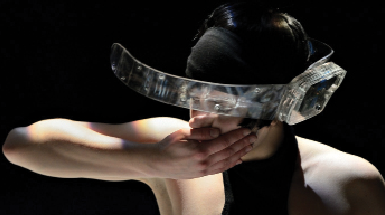After three years developing their project, McGill Music PhD students Joseph Mallock and Ian Hattwick have designed and produced the first prosthetic digital instruments in the world.
Under the supervision of Input Devices and Music Interaction Lab (IDMIL) Director Marcelo Wanderley, the team collaborated with composers, choreographers, musicians, and dancers to produce a prosthetic device that could endure extensive use in dance performance while appearing visually striking.
“We wanted the objects to suggest a purpose beyond that of a costume, but we were quite happy that that purpose might remain ambiguous,” explained one of the researchers in a short documentary about the project.
Each prosthetic contains a variety of sensors, power supplies and wireless data transceivers which respond to touch, movement, and orientation to create sound. The music is produced in real time through an open-source peer-to-peer software system developed by IDMIL, which processes the signals from the prosthetics.

What remains most striking is the semblance between these digital instruments and the human skeleton. Illuminated from within by small LED lights, the transparent pieces resemble human forms, including articulated spines, curved visors, and rib cages that were constructed through 3D printing and laser cutting.
Current versions of the prosthetics toured across Canada and parts of Europe earlier this year in a piece known as Les Gestes, written specifically for the digital musical instruments.








